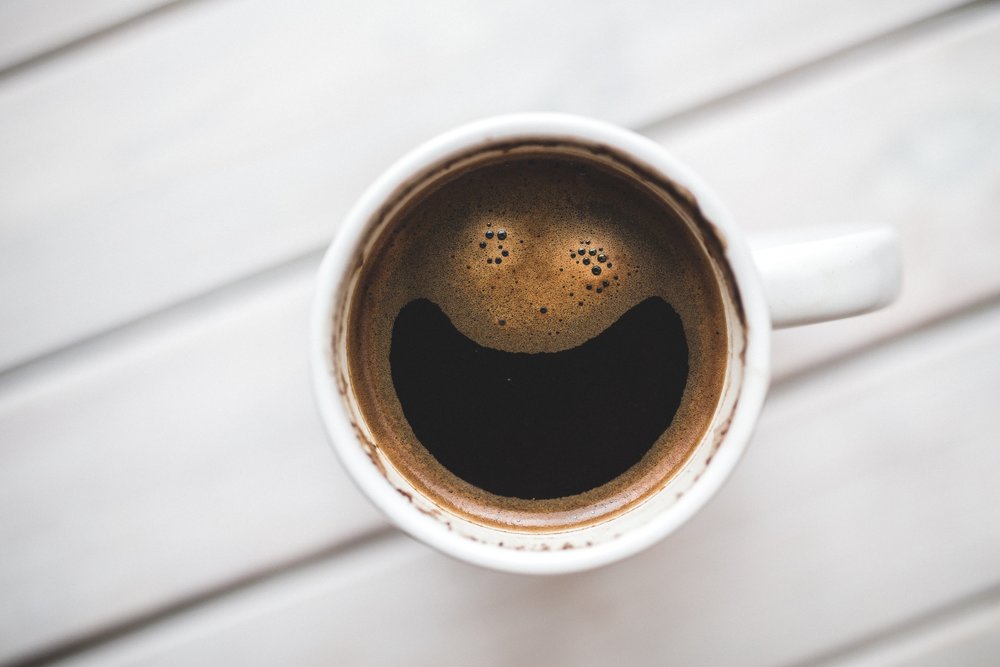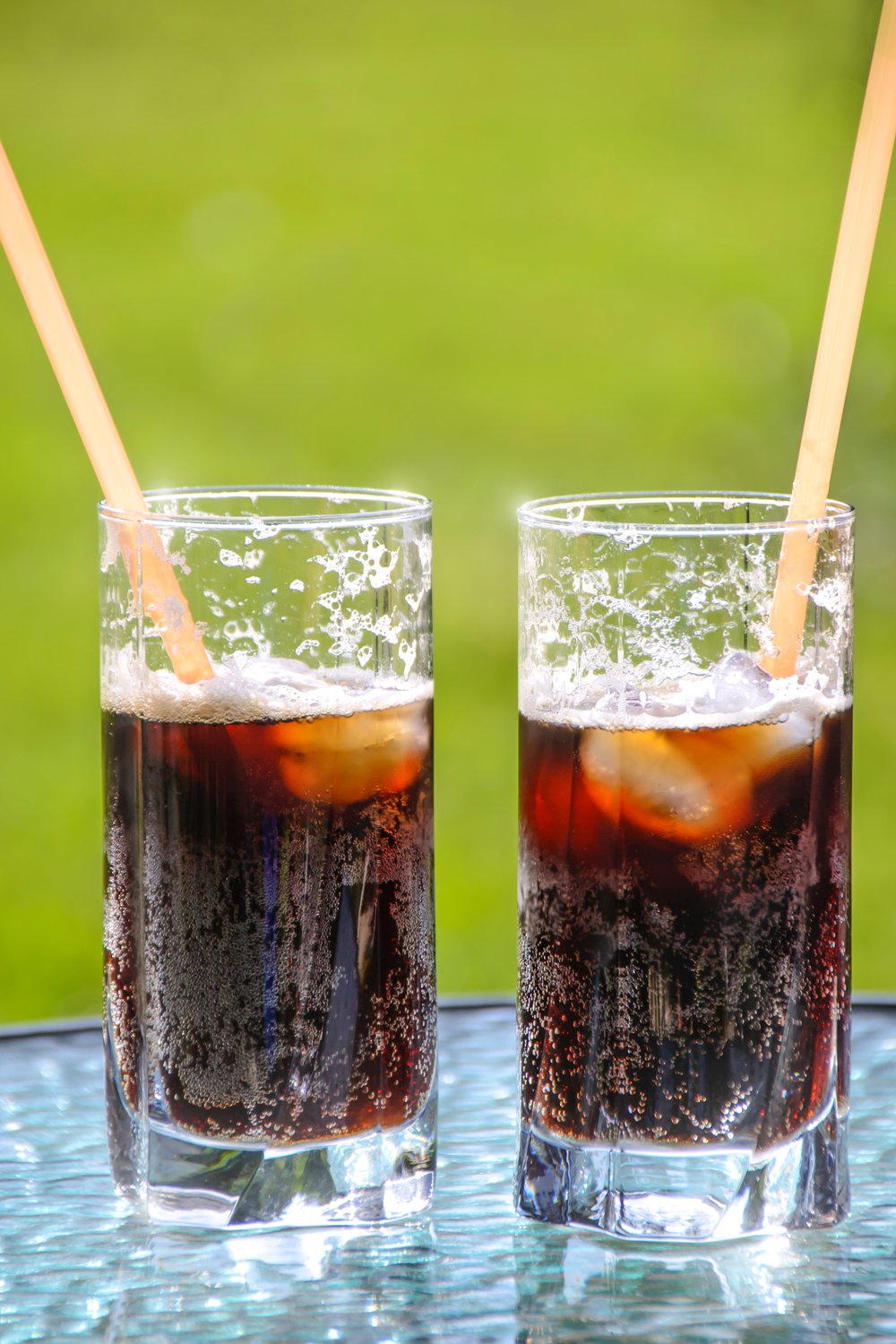Intermittent fasting is one of the absolute best ways to control your calories and burn fat.
For those who don’t know, intermittent fasting (IF) simply means you pick a large window each day where you fast (or don’t consume calories), and a small window when you do.
The most popular intermittent fasting model is the 16/8 model, meaning a 16 hour fast and an 8 hour eating window each day.
So for example, you might stop eating around 10pm and not eat anything until around 2pm the next day.
That’s a pretty long time! Once you adjust to fasting, it’s not so bad, but even still, you might find yourself sometimes getting pretty hungry before the eating window starts.
So here are all of my favorite ways to not feel hungry when fasting!
My 3 best intermittent fasting hunger tips are:
- Sparkling water like LaCroix
- Working out (It works!)
- Waiting for the hunger to fade away
(And did you know you can use a quick breath sensor like this one to know when your body is in fat-burning ketosis mode during a fast? Click the link and check it out.)
1. Drink Water
OK, so this one is pretty obvious.
You need to stay well-hydrated regardless of whether you’re fasting or not, but you might want to drink even more water if you’re doing intermittent fasting.
Drinking a big glass of water is obviously great for your hydration levels, and completely absent of any calories or other nutrients that might break a fast.
But it should give you stomach a temporary full feeling that can help take the bite out of the hunger.
Warning: You’ll probably have to pee a lot during IF! Without food in your stomach, all that liquid passes right through you.
2. Drink Sparkling Water
The bubbles in sparkling water have an awesome effect on your stomach, making you feel fuller than you actually are, and far fuller than just drinking plain water.
Again, the feeling won’t last long, but it’s great for temporary relief and hydration.
Also, one of the most challenging parts of fasting is just not being able to do anything with your hands and mouth!
It’s not so much that you need food, just that you’re used to having something to consume.
Drinking sparking water just feels a little like you’re actually having something, and that mental relief can go a long way.
My favorite sparkling waters for intermittent fasting are La Croix and any kind of naturally flavored, zero-calorie sparkling water (Perrier, Dasani, etc.)
The grapefruit or pamplemousse flavor of La Croix is the best (get it on Amazon), hands down.
3. Drink Black Coffee

Drinking coffee black might take some getting used to if, like me, you really love coffee with milk and sugar.
But drinking it black makes it fasting compliant (a cup of black coffee should have no more than 1-3 calories).
I start my day with about two cups of black coffee shortly after I wake up, though some people recommend drinking it a little later in your fast because the caffeine helps with appetite suppression.
Again, it’s just nice to have something to do with your hands and mouth, and get a little something in your stomach, while you’re not allowed to eat.
4. Try a Ketosis-friendly supplement
The rise of the Ketogenic diet has led to some pretty incredible innovations in the nutrition and supplement scene.
Did you know you can drink something like Exogenous Ketone Base from Perfect Keto, keep your fast going strong and:
- Get more energy
- Kickstart the fat-burning ketosis process
- And boost mental clarity
If drinking water just isn’t cutting it during your fast, try going with a science-backed keto base to really crush those hunger cravings and get a lot more energy, fast.
(Plus, a little deliciousness in your mouth to satisfy those taste buds.)
Pretty phenomenal.
If you want to try Ketone Base, hit this link and use code APERFECT15 for an easy 15% off your order.
5. Drink Hot Bone Broth
Depending on what kind of fasting protocol you’re following, this may or may not be allowed. Because bone broth actually has calories.
A cup of bone broth should be about 30-50 calories.
This is pretty minimal and has very little impact on your overall calorie consumption, while being absolutely packed with good nutrients, so most fasting plans allow to bone broth during the fast.
If you find yourself struggling to make it to your eating window, you can heat up a mug of bone broth (you’ll probably want to add a little salt) and sip it like coffee.
It’ll fill your belly and taste great, while giving you a surprisingly large portion of protein (about 10g!) and not really adding to your daily calorie total.
Bone broth is pretty expensive, and it does “technically” break the fast because of its calorie content, so it’s best to save this for days when you’re really struggling.
I love these single-serve bone broth packs on Amazon, so I can grab one when I need it without opening a whole jug and risking it going bad.
6. Drink a Diet Drink

Again this may or may not be allowed depending on what kind of fasting you do.
Some proponents of IF strictly forbid anything that might provoke an insulin spike in your body (the hormone that prepares our body to digest food).
There’s some mixed evidence that artificial sweeteners can do this.
But for most of us, the occasional diet soda or drink will be fine, because they have no calories.
If you’re having trouble during the fast, a diet soda is fizzy, flavorful, and hits you with a burst of caffeine, all of which can temporary suppress your hunger.
Warning: While great for immediate relief, there is some evidence that diet sodas can increase your hunger throughout the day, so use sparingly.
7. Chew (sugar free) Gum
Alright so we’ve pretty much run the gamut of things you’re allowed to drink while intermittent fasting.
If you’re hungry and jonesing to chew on something, try some zero calorie, sugar free gum.
(Again, there’s debate on whether artificial sweeteners are allowed during different styles of IF, but the bottom line is that anything without calories should be pretty safe)
The slow release of flavor and the chewing action should keep you busy, and somewhat satisfied, for a while.
This is a good technique to get you through that last hour of your fast before you can start eating.
8. Focus on a Task
If you’ve been flying through water, coffee, sparkling water, and the like, but you’re still struggling (hey, it happens… some days are tougher than others), you may need to get your mind off of food.
Rough stretches of intermittent fasting are a great time to get some work done.
Focus on a task that really engages you, something you’re excited to work on, or something that’ll be easy for you to chip away at for a while.
(For me, I write on this blog when I’m fasting!)
Something that really requires you to dig deep and challenge your brain might be a little hard when you’re in a hunger fog, but if you’ve got a work project that isn’t complicated but just needs some intense focus, now is a good time to knock it out.
9. Go on a Walk
You might think you should conserve energy when you’re deep in a fast, but my experience doing IF has taught me otherwise.
I find my body tends to be much better at tapping into its energy stores if I get up and move around; like going on a walk.
Sitting around feeling miserable just tends to make things worse.
But if I get outside, get some fresh air, and get moving, I typically feel a lot better and more energetic.
10. Be Social

Being around other people is the ultimate distraction!
Go talk to someone you like, whether it’s hanging at the water cooler at work, calling up a friend, or like I do, taking your dog to the dog park and chatting with some of the folks there.
Being social gets your mind and body much more engaged and alert, and you’ll find your hunger starts to fade to the background a bit.
11. Work Out
I find that fasting is way easier on days that I lift weights than days where I don’t.
On days I don’t work out, there’s more time to fill and I’m not as active. It seems my body has a tougher time accessing those energy stores I need to get through the fast.
A lot of people warn you about working out on an empty stomach (and honestly, I would caution anything too extreme where you’re burning 300-400+ calories in a short period of time), but anaerobic workouts like lifting weights are perfect for intermittent fasting.
You’ll find your energy actually goes up during and after your workout, not down.
(Here’s the intermittent fasting workout program that helped me drop 20+ pounds of fat)
12. Be Patient
If you’ve tried everything and you just can’t get your mind off your hunger, you might need to just wait it out.
Hunger during fasting often comes in waves. You might find yourself extremely hungry and feeling famished one minute, and then totally fine the next.
See if you can just make it 15 minutes longer with a glass of water and a solid distraction.
You might find the hunger fades after those 15 minutes are up.
13. Eat
All of that being said, you should listen to your body and not put yourself in a dangerous situation.
The idea of intermittent fasting is to make dieting easier, not miserable. The goal isn’t to starve yourself.
If you’re tired, cranky, and feeling feint, you might really need to eat something. And that’s OK.
The majority of the benefits of IF come from your calorie restriction. So if you still hit your daily calorie goal, you won’t have any problems.
You can try to get your full fast in the next day when you’re feeling better.
(Check out an example intermittent fasting meal plan)
Wrapping Up
Intermittent fasting can definitely take some getting used to, but the biggest challenge is that you’re probably just used to eating during the day.
Once you break that habit, you’ll feel a lot better.
But it does sometimes get hard. If you stay busy, stay active, and stay hydrated, you’ll have a much easier time dealing with hunger during fasting.
And ultimately, it’s not the end of the world if you need to eat something. So give yourself a break!
And if you want to get some great biofeedback on what’s going on inside your body, plus track your progress and monitor ketosis, try the Keyto breath sensor and app.
Hope this helps!
These tips aren’t super accurate if you want the best results from IF the goal is to keep insulin low and take in no calories in order to force your body into ketosis and make it burn fat. Diet sodas and drinks still have calories and some will spike your insulin levels ruining the fast. Sugar free gum also still has calories and should mostly be avoided. The best advice is to workout your way into a fast start with a 12:12 and move into different windows. Or if fasting is too difficult try a ketosis diet or eat healthier while increasing the amount of exercise you do. Personally IF is the best method for fat loss for me but if you struggle with portion control or an eating disorder I would highly discourage it. And always consult your doctor first before attempting such a thing
Fair point, Jenelle. I mention that in a few places in the article, that a lot of these methods aren’t compliant with suppressing insulin levels.
But a lot of people do fasting for, IMO, the most proven and useful benefit which is naturally restricting your calories and making dieting easier and more enjoyable. If you’re just worried about CICO and using fasting as a tool for that (which is primarily how I use it), these methods should help a lot.
But I agree with your points. Thanks for chiming in.